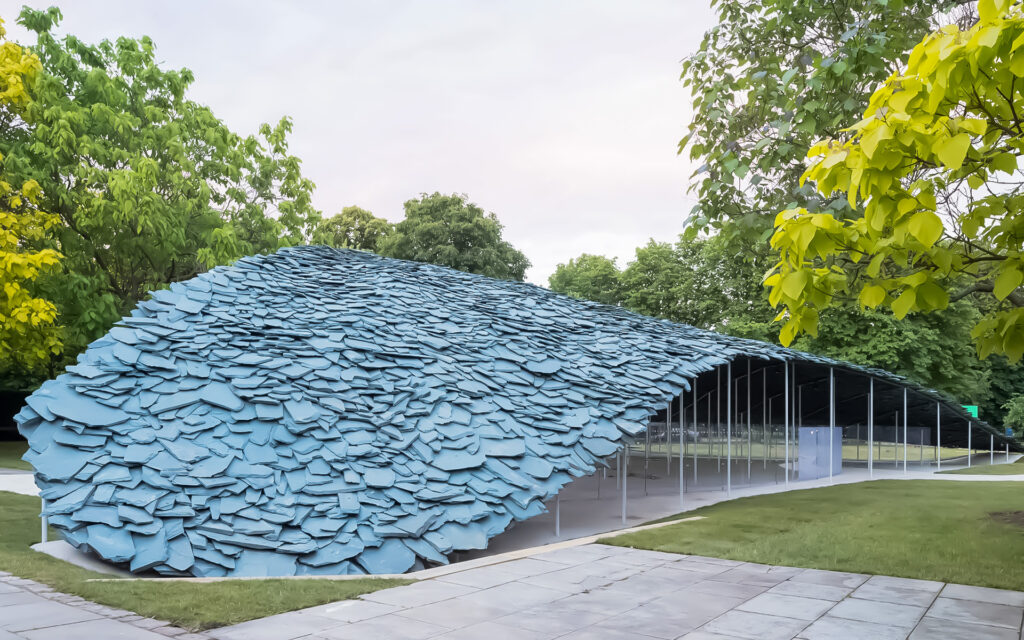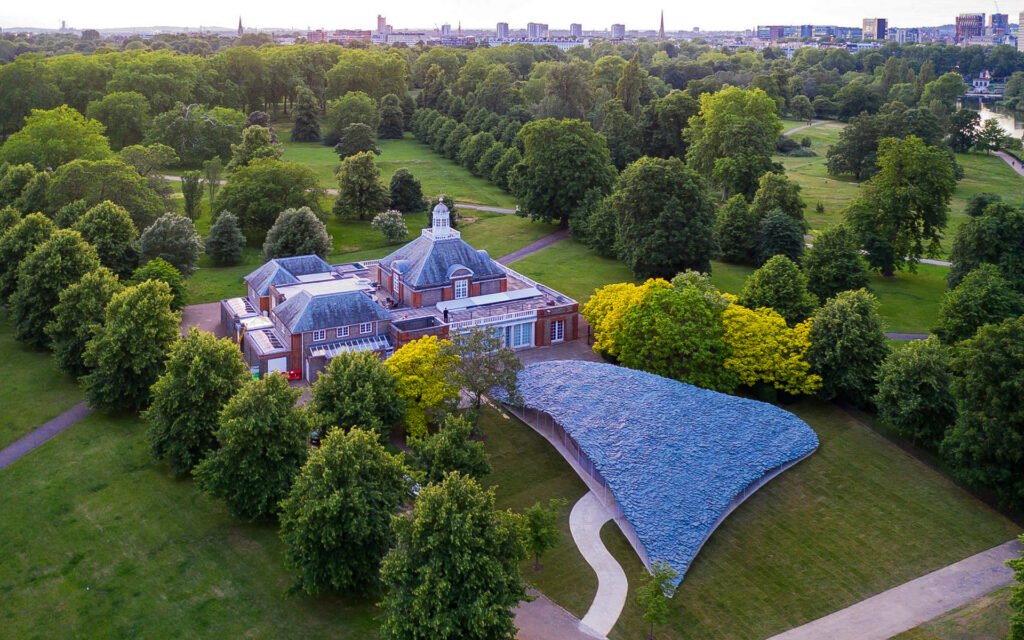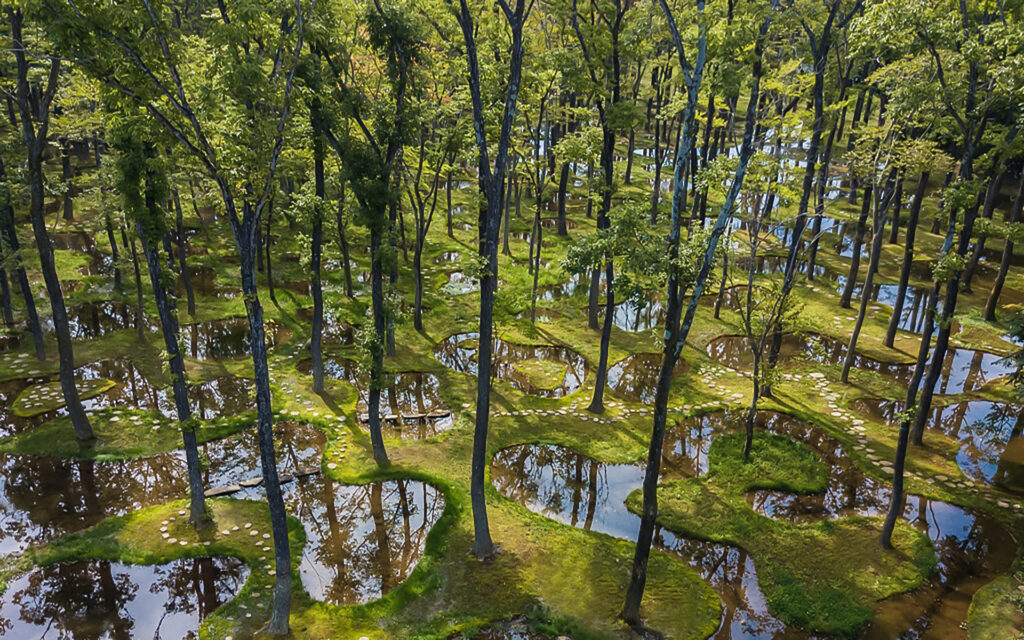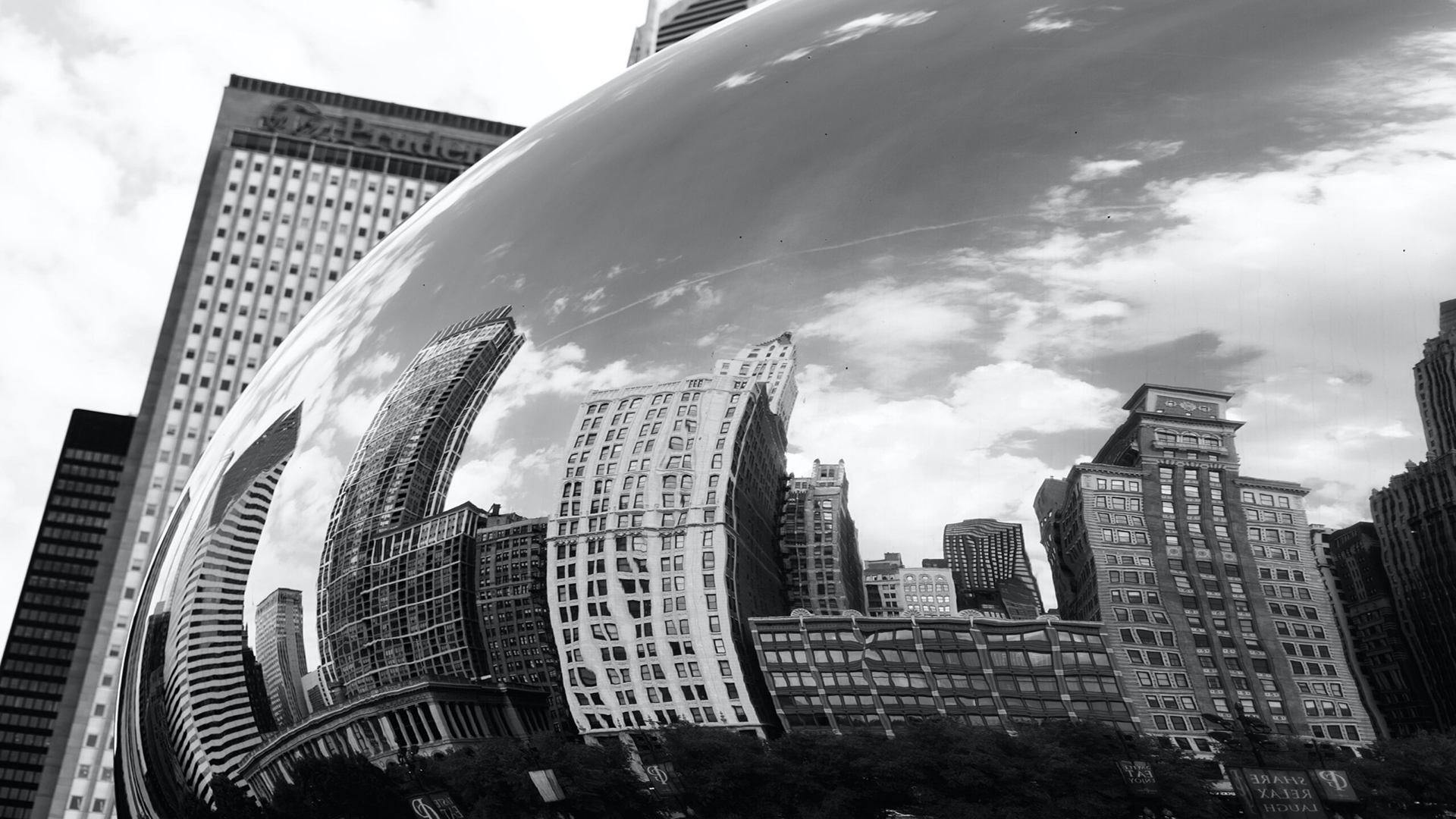There are volumes resting on an indifferent plane/landscape, crazy architectures that seem to originate from a distorting mirror. There is no continuity between buildings and the natural environment, but rather a sharp contrast between them, as if to affirm the loss of meaning of these buildings. The loss of context. Crazy topographies. The morphologies of a-contextual containers, crazy volumes without landscape. Junya Ishigami tells us about this architecture made up of “Crazy Buildings“. In a recent interview, he explains his point of view and proposes a new path.
I don’t want to build crazy buildings
Buildings as topographies
Junya Ishigami is a Japanese architect (born in 1974). For him, the challenge is to conceive buildings as topographies, concealed in the landscape and inspired by the forms of nature. It is a path indicated by other architects (think of Emilio Ambasz).
Now Ishigami proposes a new path: to let nature shape the architecture, to play on the ambiguity of the indoor-outdoor relationship, to make nature and artifice inseparable elements. Isn’t that what traditional architecture has done for centuries?

Settlement patterns
Aren’t the historical settlement patterns, determined by a deeper knowledge of the environment and the landscape in which the architecture is situated, its strengths? It comes to mind the ever-current analyses of Christopher Alexander in the book “Pattern language” (1977), which illustrates a language derived from timeless entities called patterns.
As the author writes in the introduction, “Patterns together form a language.” But these models also describe a problem and offer one or more solutions. In this way they provide ordinary people, not just professionals, with a way to work in their fields to improve a city, a neighborhood or a building; to design a home for oneself or work with a team; to design an office, a workshop, a public building or a school. Without resorting to the gimmick of the crazy building.
A meeting point between nature and architecture
The revival of this approach appears unequivocally in the work of Junya Ishigami. On several occasions, he has affirmed that he is looking for “a way of designing that is a meeting point between nature and architecture. Blurring that boundary allows us to live in absolute proximity to everything else in the environment.”
A way of designing that is a meeting point between nature and architecture. Blurring that boundary allows us to live in absolute proximity to any other element in the environment

Buried Spaces
In 2017, the architect built a Visitor Center in Groot Vijversburg, a historic villa with a park in Tytsjerk (Netherlands). The complex seems to emerge from the same paths of the woods. Ishigami affirms he “found the spaces buried in the landscape” to shape the idea. The building is used to host exhibitions, concerts, conferences and events. In fact, the visitor center is a covered path that leads to Villa Vijversburg. It is bordered by windows, in order to ensure harmonious integration into the park. By multiplying the views, to the point of give to them, and not to the building, the role of true protagonists of the whole.
Water forest
The forest is also central to the Botanical Farm Garden Art Biotop / Water Garden that Ishigami has created in Japan. It’s a seemingly natural setting, but it’s actually created out of nothing, just like architecture. Where once there was a rice paddy, today there is a pattern of small circular ponds. Among them, the designer had trees uprooted from an adjacent area transplanted to make room for another construction. The result is a magical “water forest” designed as an enchanted landscape. In which even the water of the nearby stream flows in a programmed way between the ponds, at different speeds. It produces different sensations and sounds. A perfect place for meditation in the best Japanese landscape tradition. It is also reminiscent of Carlo Scarpa, albeit in a completely “naturalistic” version, taking a lot from the oriental sense of nature. We can see the involvement of the senses, meditation, balance as opposed to what happens with crazy buildings and landscapes.

Artificial nature
What Junya Ishigami puts into the projects is not just a feeling. Here we could speak of a real philosophy of building. The “Artificial nature” is a constant theme in his work. It is an anthropized nature that, at the same time, does not deny its natural character, nor the profound “landscape” attitude of its design work. He says, “For me, architecture is not just the work of man. And architecture should also be one of the elements of the scenario. So, the architecture itself is not important, but the important thing is the relationship with the surrounding environment.”
Perhaps it is in this point of view that the essential value of the thought of this architect is concentrated. He knows how to interpret decline as an opportunity for rediscovery. In other words, it is an architecture obtained “in negative”, by subtraction. It is a topographical architecture that belongs to the landscape, precisely because it is from there that it originates. In it, the natural aspect manifests itself strongly, giving the spaces the feeling of places.
For me, architecture is not only man-made, and architecture should also be one of the elements of the scenario. So, the architecture itself is not important, but the important thing is the relationship with the surrounding environment
Several solutions
Junya Ishigami sums up his thinking as follows: “We have to invent a lot, I think. Today, every person believes in a different future, having a different image of it. So, maybe the role of the architect in this era is not to create one solution, but to create several different solutions. I am inspired by the conditions or the existing environment in each project. The important point is that architecture is halfway between the work of man and nature. I want to create a good balance with my surroundings.” And finally, to close any controversy, he says: “sustainability is very important, but at the same time I think balance is also important”.
To learn more: An interview with Junya Ishigami
You may be interested in: Floating cities in the South Atlantic





